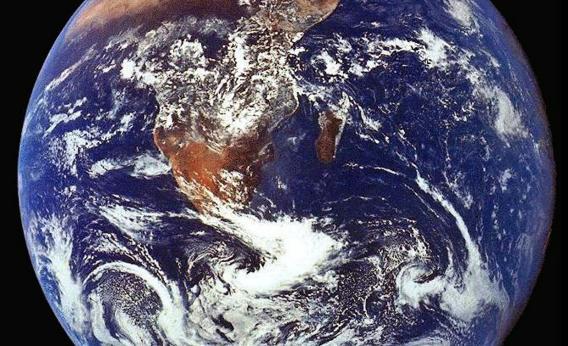In The Age of Miracles, Karen Thompson Walker’s newly released debut novel, the Earth apparently hasn’t received the same memo as most of its citizens: Instead of moving at a pace faster than ever, the planet’s rotation begins to slow.
At first, the days grow by about 56 minutes. Eventually, each rotation takes longer than 48 hours. The novel explores scientific and environmental implications of “the slowing,” while focusing primarily on changes in society, relationships, and humanity itself.
Walker describes the lengthening days in such realistic detail—professional baseball games are thwarted by gravity’s changes; agriculture must rely on artificial light—that I found myself wondering how fantastical the premise really is. Could this actually happen?
The answer is yes. Well, kind of.
The Earth’s rotation is, in fact, slowing. But not at a rate that anyone would notice—unless one happens to be around in 150 million years.
A number of forces cause the slowing of the Earth’s rotation, but the strongest is tidal friction, a result of the moon’s gravity. The side of Earth closest to the moon feels its pull the strongest, the center of Earth—the point from which gravity is measured—is essentially neutral, and the side farthest from the moon feels its gravity less. That difference in gravitational pull stretches the Earth, which causes tides and tidal bulges.
Because they have mass—and thus, gravity—these bulges pull the moon forward or farther away from Earth by roughly four centimeters per year. But just as these bulges exert force on the moon, the moon exerts the opposite force on them, pulling them back toward it, creating friction and slowing down the planet’s rotation.
Using eclipse data from as far back as 2000 BC, scientists estimate that the Earth’s rotation is slowing at approximately 1.7 milliseconds per solar day per century. In other words, the Earth day has grown by roughly 0.07 seconds in the last 4,000 years.
This is where the atomic clock comes in. It measures time by atomic vibrations, rather than by the Earth’s rotation, which is what our clocks do. The Earth currently rotates every 86,400.002 seconds—and the 0.002 means that our clocks lose time relative to the atomic clock. (Similarly, in the novel, “clock” time doesn’t match up with “real” time as the days stretch longer and longer.) This is why scientists periodically add leap seconds to our standard time. (The BBC has a great, short video explanation.)
The deceleration of Earth’s rotation is irregular: From 1999-2005, there were no leap seconds, but since then, there have been two, with another scheduled for the end of this month (June 2012). Without leap seconds, we’d have a 25-hour day in roughly 140 million years.
If the Earth is still around billions of years in the future, tidal friction would be eliminated when the tidal bulges line up exactly between the center of the earth and the center of the moon, thus “locking” the Earth. One Earth rotation would equal one revolution of the moon around the Earth; one month would be the same as one day (about 47 current days long). However, most scientists believe that long before this happens, the sun’s radiation will vaporize the oceans (in approximately 2.1 billion years) and that the sun’s evolution into a red giant will destroy Earth (in about 4.5 billion years).
Forces that sporadically speed up Earth’s rotation cause the irregularities in its rotational deceleration. Rapid tidal variations change the distribution of water on Earth, which can decrease the planet’s moment of inertia, or the inertia of its rotation. A common example of moment of inertia is a figure skater who pulls her arms tight into her body to spin faster. When the moment of inertia decreases, the Earth’s rotational speed increases. Post-glacial rebound, a phenomenon that occurs when land previously kept under huge ice sheets starts rising, also decreases Earth’s moment of inertia. Similarly, as the polar ice masses disappear, Earth’s mass moves closer to its axis, making Earth more elliptical and increasing its rotational speed. Natural disasters can also accelerate Earth’s rotation. The earthquakes that hit Japan in 2011 and Chile in 2010, for example, likely displaced enough mass to change the Earth’s moment of inertia (scientists are still refining their calculations). While these accelerative forces oppose the Earth’s rotational deceleration, they aren’t strong enough to offset it.*
In The Age of Miracles, many characters speculate that the “slowing” is related to climate change and other environmental degradation. But while the Earth’s rotation is indeed slowing and fluctuating, only impact with another planet, moon, or massive asteroid could wreak the kind of havoc described in the book. So we’re safe, for now.
Although I have to say, a 25-hour day sounds pretty good at times.
*June 28, 2012: This post has been updated to clarify the explanation of post-glacial rebound.
Joelle Renstrom lives in Boston, where she teaches and writes about all things geeky. Her blog, Could This Happen?, explores the relationship between science and science fiction.
